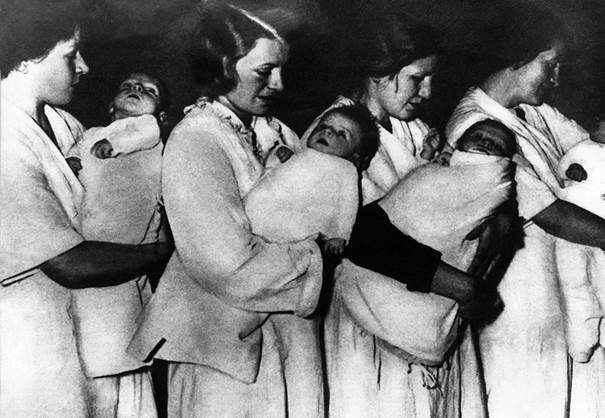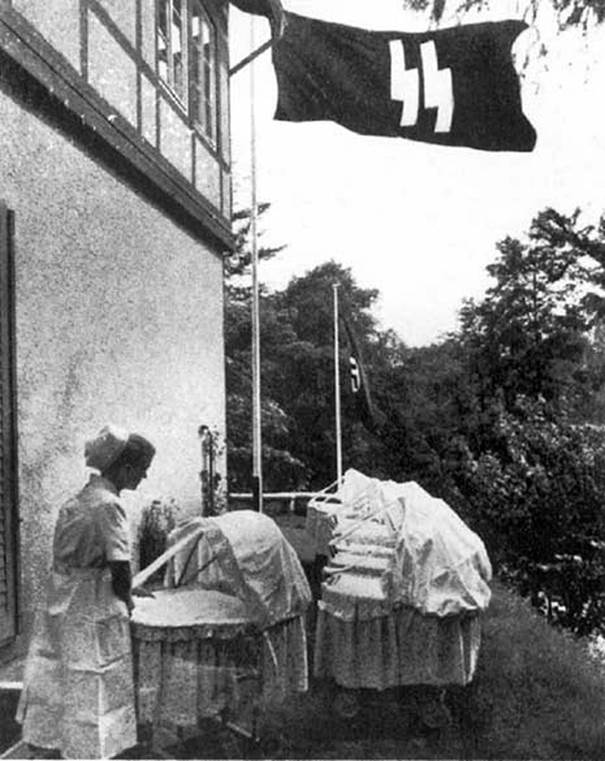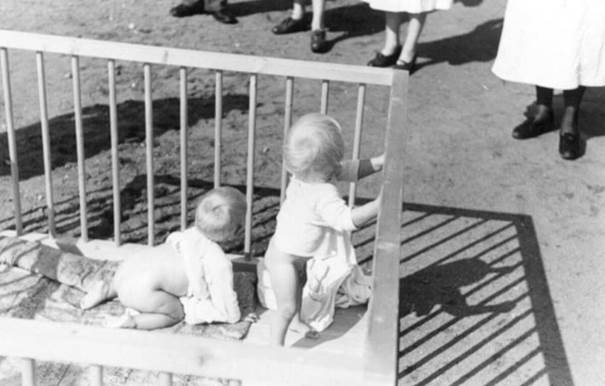Kidnapped in Crimea, raised by Germans: how a Russian boy became an “Aryan dog”
The Lebensborn program was created on December 12, 1935, by order of Reichsführer-SS Heinrich Himmler. At first, it was invented as a network of orphanages where German women could hand over illegitimate babies, but then it turned into a conveyor belt for creating children of the pure Aryan race.

Kidnapped in Crimea, raised by Germans: how a Russian boy became an “Aryan dog”
A toddler with blond hair and bright blue eyes brought a smile to the delight of neighborhood aunts, mothers and grandmothers, but the boy’s appearance attracted the attention of more than just these women. Sasha, who was three years old at the time, did not know that he had been chosen to become part of a new “genetic breed” that would replace the millions of “unclean” ones exterminated during the war years.
When German tanks invaded Crimea in 1942, the boy was snatched from the arms of his mom and dad and taken to a German medical institute, where doctors measured every part of his body, checking the shape of his nose, eye and hair color, the shape of his skull, and other parameters. In total, there were about 52 of them. The boy went through all of them and was selected to participate in the Lebensborn Source of Life program to ensure the purity of future generations of the Aryan race. In the occupied lands, future Aryans were searched for in the Crimea, Bryansk, Smolensk, near Pskov and Novgorod.
After the children got into the program, the procedure for naming them a new name was carried out. The ceremony was very similar to the rite of baptism, only the role of priest and godfather was assumed by an SS officer. After this ceremony, the child usually had to draw up documents, but with Sasha Litau it turned out differently. He didn’t spend even a month in the orphanage.

Getty Images
In July 1943, Alexander Litau became Volker Heinecke in the family of a wealthy shipowner who had no children of his own. In the German elite of those years, it was believed that childlessness was a shameful deviation. “I remember these people walking into a room where we children were lined up like dogs about to be taken into a new home,” Volker later said.
The future parents hesitated a little – the mother wanted a girl, but the boy ran up to Adalbert Heinecke, put his head on his lap, and the issue of choosing a child was resolved by itself. But then there was a problem: Adalbert Heinecke, his future father, was deaf and therefore technically unable to adopt a child under strict Nazi rules. However, he was an honorary member of the SS, was wealthy, well-connected, and eventually turned to a high-ranking friend, Himmler, for help.

Legion-Media
The children from Lebensborn were sent to German families as quickly as possible, but those who stayed there for at least a few months had terrible memories. Children were given up for adoption not for humanitarian reasons, but for the purpose of rapid assimilation. It was assumed that at the age of 21 the adult youth should be handed over to the German Reich.
Volker Heinecke developed a cordial relationship with his adoptive parents. In their family, it was not customary to talk about the past, his parents did not want it, and neither did the boy. He learned all the details of his origins after the death of his Nazi parents. Sorting through his father’s papers, he found a certificate stating that he had been taken from an orphanage.
Having inherited the family firm of shipbrokers, Volker worked in London after the war and made a fortune. After he first discovered his birth papers, Volker spent much of his life searching for the truth about who he was and who he wasn’t.
The adoption papers that Volker found after the death of his parents turned out to be forged, and for several years he tried to reconstruct the truth about his real parents. Volker collected 20 boxes of documents from the U.S. government, the German Red Cross, the Polish Red Cross, the International Tracing Service, the British Army of Occupation, and at least 30 other organizations to get any closer to the solution.
Legion-Media
After opening the world’s largest archive of Holocaust victims at the Red Cross Tracing Center in Germany in 2008, Volker finally found out the truth. He found a document dated November 12, 1948, which read: “The childless Heinecke couple applied to the Hamburg Youth Office for the adoption of a child. They were given permission to have a child, and they went to the Lebensborn house to choose one. The child was taken away on 20.05.1943.” Volker also found other documents that listed the boy’s name:
The mystery was almost solved. At the age of 70, Volker Heinecke went to the Crimea. He found the house and street where the locals told him the Litau family had once lived. He stood there and tried to imagine the Germans advancing, tanks and motorcycles driving down that street, and taking away a little three-year-old boy from his parents, who was innocent of anything. Heinecke hasn’t found the grave of his parents, but he says it’s all he dreams of.
